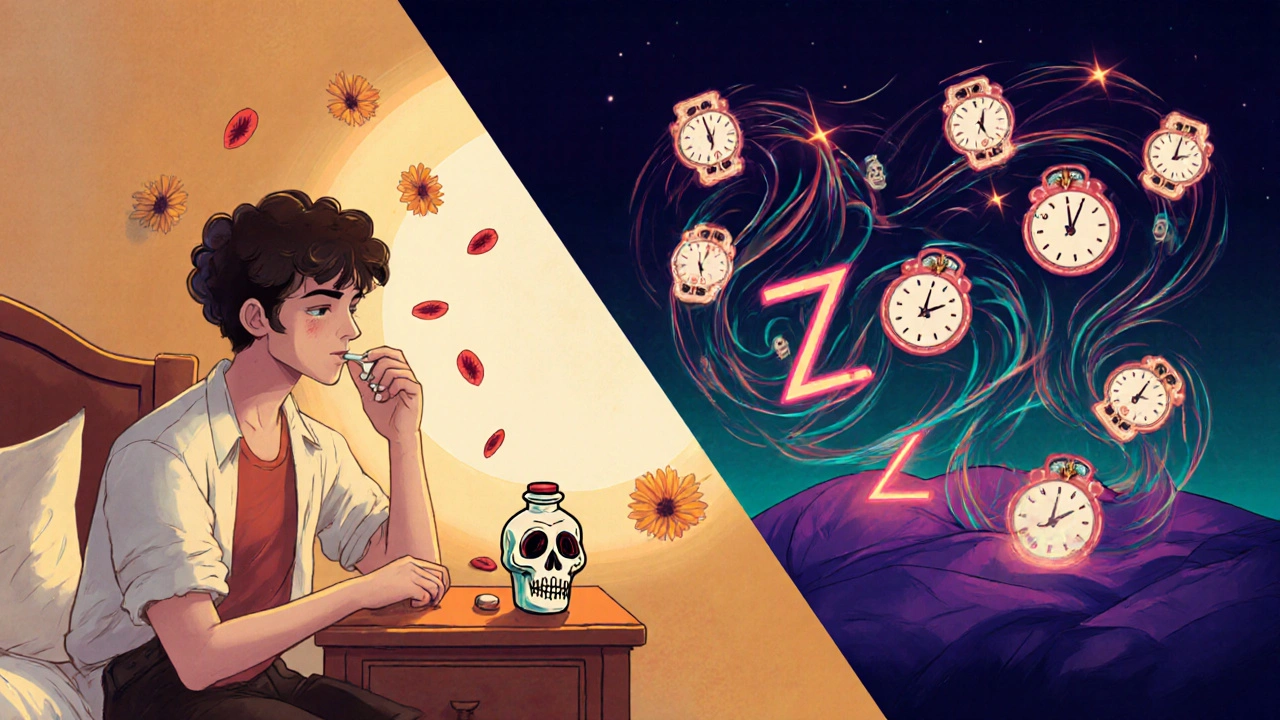Sleep Changes: Understanding How Health & Meds Affect Your Rest
When dealing with sleep changes, any shift in how long, deep, or regular your sleep feels. Also known as sleep disturbances, it can show up as trouble falling asleep, waking up too early, or feeling unrefreshed. These variations aren’t just annoyances; they signal how your body’s chemistry, environment, and daily routines interact. A single night of poor sleep can ripple into mood swings, weakened immunity, and slower thinking. Recognizing the pattern early helps you pinpoint the cause before it spirals into chronic fatigue.
One of the biggest drivers of sleep changes is medication side effects, how drugs alter brain chemicals that govern sleep cycles. For example, topiramate, commonly used for seizures, can lead to vivid dreams or insomnia, while some blood‑pressure pills might make you drowsy at night. Insomnia, the chronic inability to fall or stay asleep often emerges as a secondary symptom of these drugs, creating a feedback loop where fatigue prompts more medication, and the cycle continues. Circadian rhythm, the internal 24‑hour clock that tells your body when to sleep and wake can also be thrown off by steroids, antihistamines, or even caffeine‑rich supplements, shifting the timing of sleep and reducing overall quality. Finally, sleep hygiene, the set of habits that promote consistent, restorative sleep acts as a buffer; poor room lighting, irregular bedtimes, and excessive screen use amplify medication‑induced disturbances, while structured routines can mitigate them.
Practical Steps and What to Expect Next
Understanding the web of influences lets you take targeted action. Start by tracking any new prescription or supplement alongside your sleep diary – note bedtime, wake time, night awakenings, and daytime alertness. If a drug consistently triggers restless nights, talk to your clinician about dosage adjustments or alternative options. Align your daily schedule with natural light: expose yourself to sunlight in the morning, dim lights after sunset, and keep electronic devices out of the bedroom. Simple tweaks like a cool, dark room, a consistent sleep‑wake window, and limiting caffeine after noon can restore balance even when medications are unavoidable. These strategies are echoed across many of our articles, where we dive deeper into specific drugs, hormone impacts, and lifestyle tweaks. Below, you’ll find a curated list of posts that break down individual medications, explore hormone‑related sleep shifts, and offer step‑by‑step guides to improve your night‑time routine. Use them as a map to diagnose the root cause of your sleep changes and to build a personalized plan that gets your rest back on track.

Learn why antidepressants often disrupt sleep, which drugs cause the most insomnia, and practical tips-timing, dosing, and adjuncts-to restore healthy rest.
Chris Gore Oct 26, 2025




